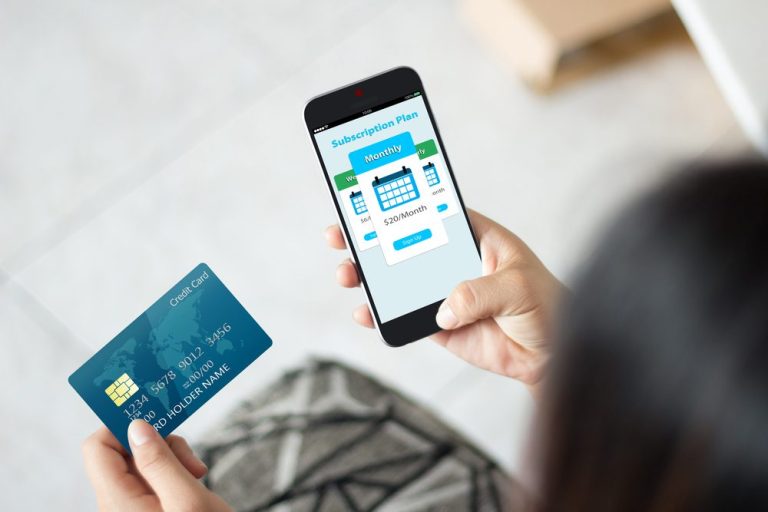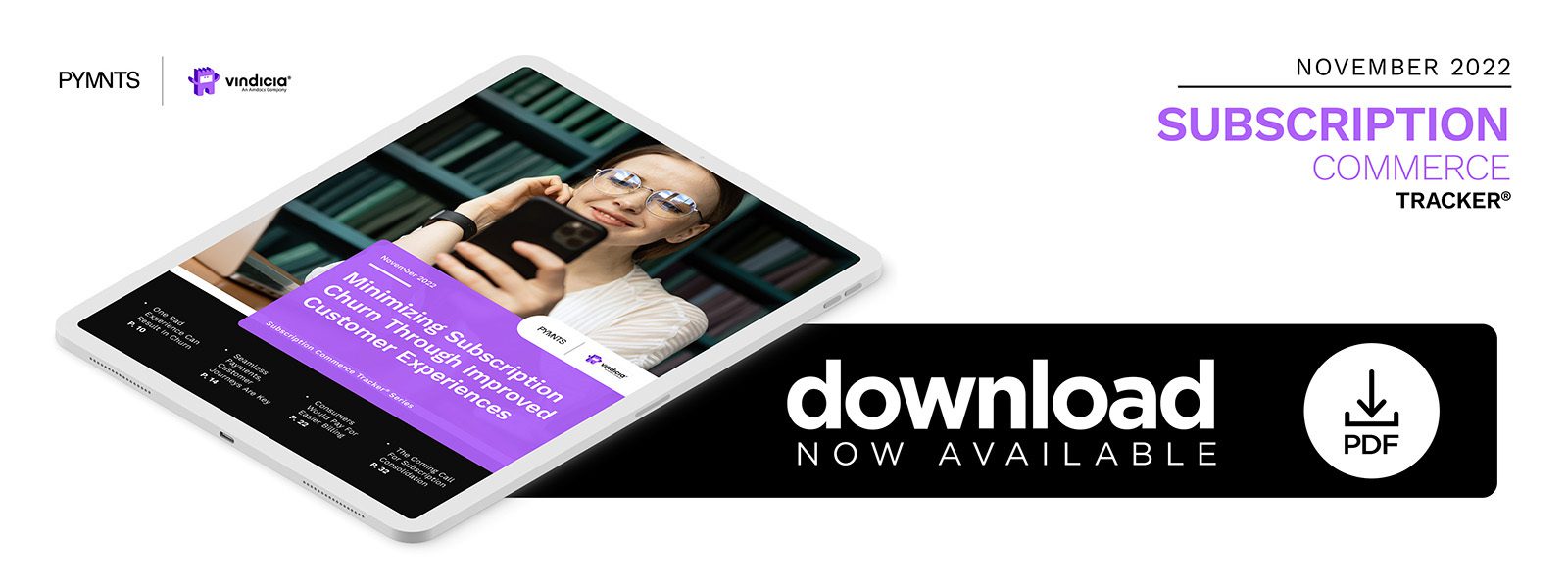PYMNTS Intelligence: Retaining Subscribers With Seamless Payments and Customer Journeys

The popularity of subscription-based services skyrocketed over the last several years, propelled by the multitude of consumers staying at home during the pandemic. The average consumer spent $273 monthly on subscriptions in 2021, up from $237 in 2018 — a 15% increase amounting to an extra $432 per year.
Subscription fatigue has been increasing since restrictions eased, and inflation has accelerated a trend toward churn. A new study found that 62% of United Kingdom consumers plan to scrutinize their subscriptions in the next six months due to the economic crisis.
Cost sensitivity is also raising the bar on customer experience for consumers’ recurring payments, with even a single bad experience likely to result in a brand’s cancellation.
Negative Experiences Sour Consumers on Subscriptions
Poor customer experiences hobble many subscription services. A February Bankrate poll found that nearly 60% of millennial and Generation Z consumers have been hit with unexpected subscription fees, for example, making them more hesitant to try these services in the future. More than one-third of respondents said it is difficult to cancel a subscription or turn off automatic payments, with 10% saying it is very difficult. A September YouGov and TrueLayer survey reported an even higher share — 45% — of U.K. consumers finding subscriptions too hard to cancel, with 38% having continued to pay for a subscription they no longer use. Ironically, 51% of these respondents said they would be more inclined to try subscriptions if they were easier to cancel.
Ease, convenience and transparency when paying — or canceling — recurring bills are vital components of a good customer experience, and consumers increasingly expect these attributes from their subscriptions. Moreover, advanced billing features can help reduce a large part of churn.
Improved Billing to Reduce Churn
More subscription platforms are introducing features such as subscription pause, which can reduce churn by allowing consumers to self-suspend their accounts instead of canceling them until they can afford them again.
In addition, not all churn is intentional, and one important way to increase customer retention is by minimizing so-called involuntary churn. This results from transaction failures due to payment details such as new card expiration dates or changed ZIP codes. A strategic billing system will automate these updates, reducing involuntary churn by 30% or more and increasing revenue by up to 5%.
Improved billing systems have the potential to boost customer retention for a wide range of recurring payments, from utilities to insurance.
Superaggregation: The Key to Personalized Experience
A well-managed customer experience can reduce churn, and one key way to provide this is through personalization via a superaggregation strategy. Superaggregation enables consumers to find, use and pay for a wide range of services in a single, trusted environment rather than take out multiple subscriptions with individual providers and apps. A user management platform can reduce costs while offering the kind of customized experience that prevents churn and increases revenue.
Recurring purchases require an ever-evolving effort to maintain relevance to customers month after month. Strategies such as flexible billing, recovery of failed payments and aggregation of curated content can set the stage for the seamless transactions and experiences that keep subscribers engaged for the long haul.
